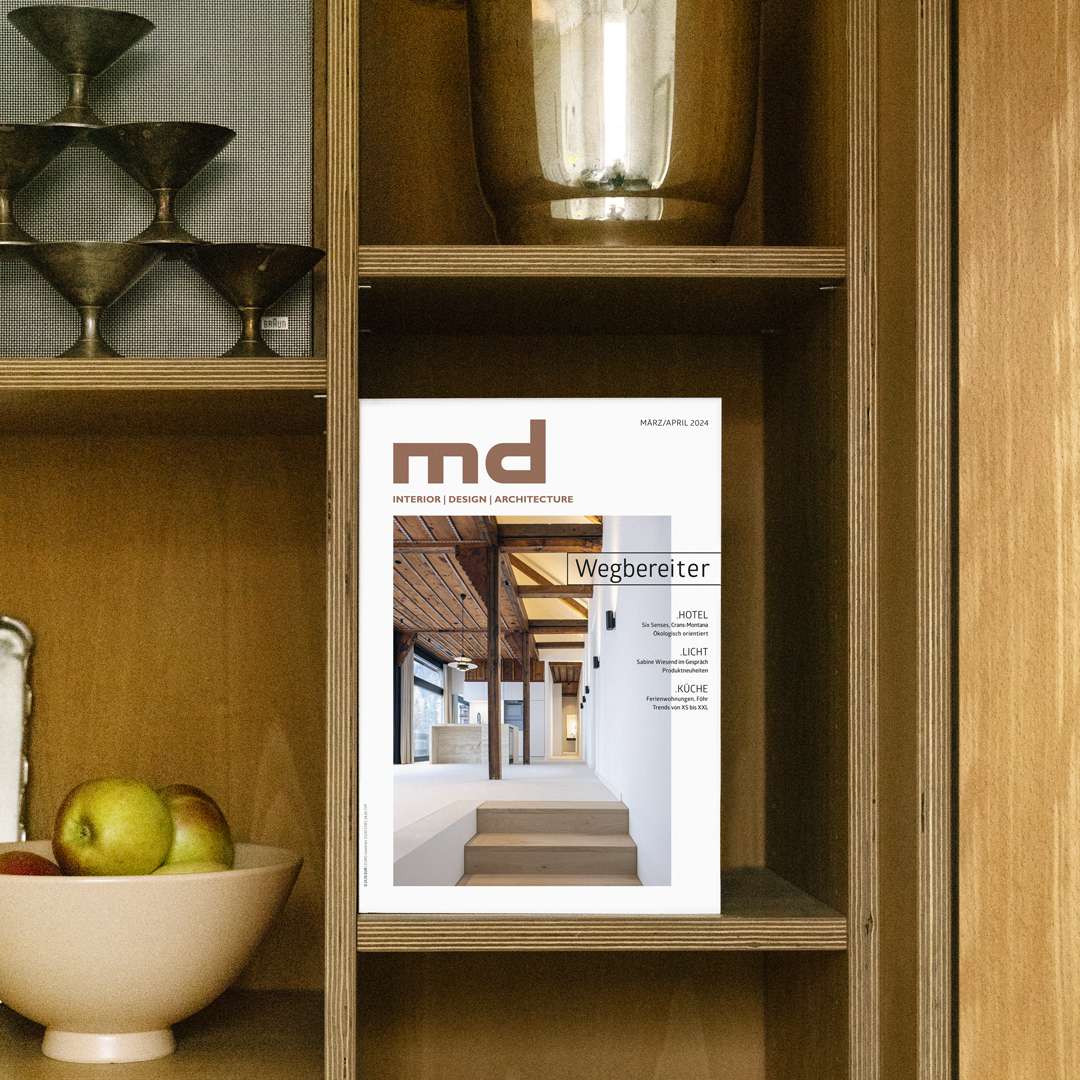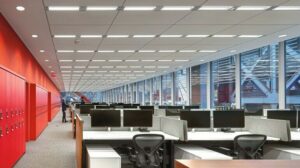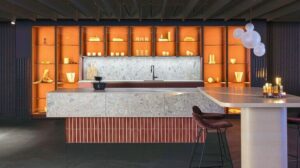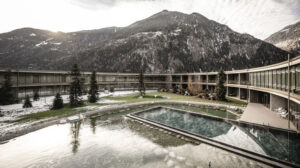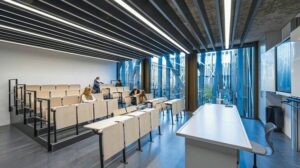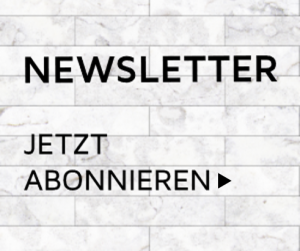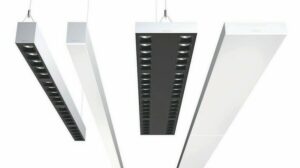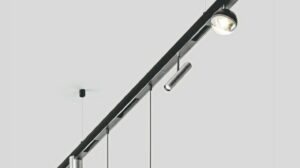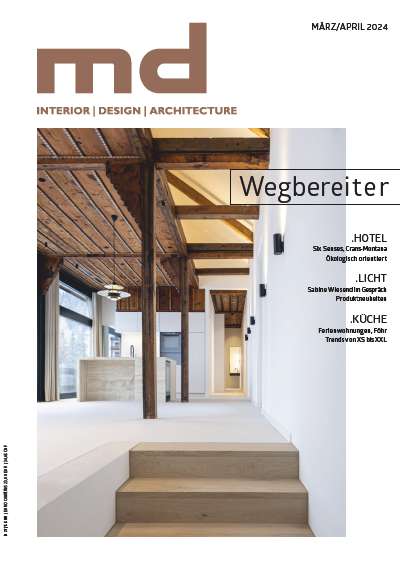Die Architektur blickt auf eine lange Entwicklung zurück. Vom Parthenon in Athen bis zum Shanghai Tower in China. Was hat sich im Vergleich zur Vergangenheit verändert und wo stehen wir heute?
Andy Cohen: Die Frage ist doch „Wie leben wir in Zukunft?“ Wir erleben eine sehr dynamische Zeit und beobachten komplexe Veränderungen sowie wichtige Entwicklungen.
Welche Veränderungen sind das?
Andy Cohen: Erstens sind da die Technologien, die sich auf das Design auswirken, insbesondere Prozessinnovationen von AR (Augmented Reality) und VR (Virtual Reality) sowie technologische Durchbrüche wie selbstfahrende Autos und deren Folgen für die Zukunft der Städte.
Zweitens die demografischen Veränderungen. Die Millennium-Generation wird bald die Mehrheit der Beschäftigten darstellen. Deshalb müssen wir einen neuen Ansatz finden, wie wir alle Lebensbereiche – Wohnen, Arbeiten, Freizeit – gestalterisch zusammenfügen. Dieser signifikante Wandel in der Mobilität und im Kaufverhalten kann sich erheblich auf unseren Designansatz und -lösungen auswirken.
Drittens die Auswirkungen des Klimawandels. Sie sind verknüpft mit der städtebaulichen Planung. Wir erleben eine intensive Urbanisierung. Im Bauwesen ist nachhaltige Gestaltung zum Katalysator geworden. Er zeigt, wie wir dazu beitragen können, intelligente, kohlenstoffneutrale Häuser mit positiver Energiebilanz zu bauen, die CO2-Emissionen zu begrenzen und Energie wieder ins Netz einzuspeisen.
Last but not least die Veränderungen durch die Globalisierung und ihre Folgen. Unser Fokus liegt auf der Frage, wie die globale Unbeständigkeit Trends prägen wird.
Wie beantworten Sie als Gestalter diese Frage?
Wir haben die Vision, „eine bessere Welt durch Design zu schaffen“. Unsere kollektive Intelligenz sowie unterschiedliche Talente, die bei uns versammelt sind, ermöglichen es uns, Neues zu gestalten und den Wünschen unserer Kunden in Zeiten des Wandels gerecht zu werden.
Unsere Entwürfe zeigen Wirkung. Täglich beeinflussen wir weltweit das Leben von Millionen von Menschen.
Früher gab es Disziplinen wie Industriedesign, Graphikdesign und Innenarchitektur. Bei Gensler machen Sie alles. Ist der multidisziplinäre Ansatz das Modell der Zukunft?
Andy Cohen: Bei Gensler entspringt Innovation aus dem Zusammentreffen unterschiedlicher Meinungen. Designlösungen resultieren aus der Vermischung kreativer Ideen aus verschiedenen Wissensbereichen. Wir nutzen unser vielfältiges Know-how, um ungewöhnliche Lösungen zu erarbeiten und unsere Position als Vordenker zu festigen.
Laut Fast Company gehört Gensler 2018 zu den innovativsten Architekturbüros. Die Beurteilungskriterien basieren auf einer Road Map für die künftige Entwicklung des Unternehmens und dessen Einfluss auf Kultur und Industrie. Wie haben Sie das erreicht?
Andy Cohen: Gensler arbeitet hinter den Kulissen, um für innovative Unternehmen und Gemeinschaften immersive Räume zu schaffen. Wir verhelfen neuen Technologien und eigenen Forschungen zum Durchbruch, um neue Erfahrungen zu generieren.
Wir arbeiten mit vielen Marken und Locations, uns sind vielfältige Perspektiven wichtig und willkommen. Deswegen unterstützen wir eine Unternehmenskultur, die Risikofreudigkeit, das Testen neuer Ansätze und Erfindergeist belohnt. Wir sind überzeugt, dass diese Eigenschaften kreative und stringente Lösungen ergeben.
Wie sieht Ihre Vision für 2060 aus hinsichtlich der architektonischen Entwicklung und wie sollten wir uns auf den Wandel in unserem städtischen Umfeld vorbereiten?
Andy Cohen: Im letzten Jahrhundert waren wir in der Stadt mit dem Auto unterwegs. In Zukunft verschiebt sich der Fokus auf den Menschen.
Für Städte wie New York und Los Angeles wird prognostiziert, dass sich bis zu 60 % der zur Zeit im Pendelverkehr zurückgelegten Strecken auf Carsharing, Mobilitätsanbieter und selbstfahrende Fahrzeuge verlagern wird.
Das hat Auswirkungen auf das Stadtbild. Parkplätze an den Straßenseiten werden in Cafés umgewandelt, Gebäude erhalten eine neue Form – die Eingangstür ersetzt die Garage als Hauptzugang.
Es werden neue Wege für Gebäude mit großzügigen Erschließungsbereichen für Bewohner entstehen. Bereits jetzt entwerfen wir Gebäude mit öffentlichen Bereichen, die einen besseren Zugang zu den Häusern bieten.
Auch Flughäfen sehen in Zukunft anders aus. Es werden keine großen Parkhäuser mehr benötigt. Folglich können die Parkgelegenheiten einem neuen Zweck zugeführt werden. Andere Flächen finden eine neue Funktion als Büroräume, Rechenzentren oder erschwinglicher Wohnraum.
Was bedeutet das für das Design?
Andy Cohen: Wir sind überzeugt, dass Design künftig auf menschlicher Erfahrung beruhen wird. Zwischen Design und der Vermittlung von Erlebniswelten besteht ein Zusammenhang. Um diesen besser zu verstehen und zu quantifizieren, haben wir den Gensler Experience Index geschaffen. Das ist eine Studie, die mit unterschiedlichen Forschungsmethoden arbeitet und sich auf die Bildung eines ganzheitlichen Rahmenwerks fokussiert.
In unserer Zeit ist der Mensch die einzige Konstante. Diese historischen Veränderungen bedeuten für uns Designer, dass wir alle Aspekte des Lebens, der Orte und Räume, in denen sich Menschen aufhalten und welche sie wahrnehmen, überdenken und neu erfinden müssen.
Dieses Umfeld soll bereichern und Menschen, Communities, Organisationen, Familien und Freunde verbinden.
Das gilt für die Einzelperson bis hin zur Stadt?
Andy Cohen: Wir wissen, dass immer mehr Menschen in Städte und Ballungsräume ziehen. Tatsächlich lebt bereits über 54 % der Weltbevölkerung in Städten jeder Größenordnung. Lebenswerte, auf den Menschen zugeschnittene Stadtgebiete werden dringender denn je benötigt, damit das soziale, wirtschaftliche und physische Wohlergeben der Menschen weltweit gesichert ist.
Wenn wir Design mit einem ganzheitlichen 360-Grad-Verständnis angehen, können wir Orte schaffen, an denen die Menschen aufblühen.
Wie kam es zum rasanten Wachstum der Firma seit 1965?
Diane Hoskins: Ich arbeite seit 20 Jahren bei der Firma. Genslers Unternehmenskultur fungiert als Plattform für individuellen Erfolg und Wachstum. Und Gensler hat sich das “One-Firm-Firm”-Prinzip zu eigen gemacht. Mitarbeiter teilen Erfahrungen mit Büros über das globale Netz hinweg und arbeiten zusammen. Im Laufe unseres Wachstums haben wir viel praktisches Know-how angesammelt. Damit können wir in unseren Projekten Erfahrungen kombinieren und innovativ arbeiten. Auch das gute Verhältnis zu unseren Kunden trägt zum Wachstum bei.
Wir haben Großkunden, die seit Jahrzehnten mit uns zusammenarbeiten. 85 % der Auftraggeber sind Stammkunden. Es geht um enge, langfristige Beziehungen. Offensichtlich werden wir von unseren Kunden als verlässliche Partner wahrgenommen.
Neubauten mit 280 m² Wohnfläche, Wolkenkratzer, Zoos, Flughäfen … Wie positioniert sich Gensler, um diese Vielseitigkeit abzudecken? Spielt die Größe der Firma eine Rolle, wenn Gensler eine Ausschreibung gewinnt?
Diane Hoskins: Unser Wachstum und unser Erfolg gründen sich auf die Gensler-typische integrierte globale Plattform. Wir haben talentierte Mitarbeiter, eine vielfältige Praxiserfahrung und bringen Menschen unterschiedlicher Fachrichtungen zusammen, die neue Designlösungen erarbeiten, die sonst nicht möglich wären.
Wir bündeln das Know-how von Strategen, Technologen, Architekten, Innenarchitekten, Markenexperten und Planern, um Design aus allen Blickwinkeln zu betrachten – quasi in einer 360-Grad-Rundumschau.
So erreichen wir eine große Übereinstimmung mit den Visionen unserer Kunden.
Manchmal arbeiten drei oder gar sieben Büros an den Projekten – besonders, wenn es um große, komplexe Vorhaben geht. Mithilfe unserer globalen Plattform können wir Mitarbeiter weltweit einsetzen. Wenn ein Büro stark beschäftigt ist und ein anderes weniger zu tun hat, verteilen wir die Arbeitslast.
Sehen Sie auch Vorteile für den Kunden?
Diane Hoskins: Unsere Kunden wünschen sich, dass die Verantwortung für Ihr Projekt „in einer Hand“ gebündelt ist. Gleichzeitig möchten sie sicher sein, dass sie einen Entwurf und eine Bauausführung in Spitzenqualität bekommen, und dass Budget und Zeitplan eingehalten werden. Es hilft niemandem, wenn eine Umgebung entsteht, die Menschen spaltet, sie nicht fördert und zu keinem guten Ergebnis führt. Ein vielseitiges, kooperatives und integriertes Team schafft das.
Welche Strategie verfolgen Sie, um praktisch überall auf der Welt neue Märkte zu erschließen und zu erobern?
Diane Hoskins: Wir sind stolz auf unser kooperatives Führungsmodell. Wir fungieren tatsächlich wie eine Einheit, ein Team, das nahtlos zusammenarbeitet. Letztes Jahr haben wir Projekte in über 100 Ländern entwickelt.
Zu unseren Strategien gehört es, lokal zu agieren und dabei ein globales Unternehmen zu sein. Wir fliegen nicht kurz zu unseren Kunden und gehen dann wieder. Jedes Büro wächst organisch mit starken lokalen Wurzeln. Wir müssen als vertraute Berater nahe bei unseren Kunden sein. Deshalb haben wir in zehn Regionen 44 globale Büros. Wir wollen beides: lokal präsent und global aufgestellt sein. So können wir unsere Kunden am besten betreuen.
Wie gründen Sie ein lokales Büro?
Wir eröffnen in der Regel ein Büro mit einer Person, die schon 20 bis 30 Jahre lang für das Unternehmen gearbeitet hat. Sozusagen ein Veteran, der unsere Kultur, Werte und Leitprinzipien kennt und verinnerlicht hat. Diesem stellen wir eine Führungskraft zur Seite, die über lokales Wissen verfügt und in der Kultur vor Ort verwurzelt ist. So können wir das Team individuell und passgenau für jeden Kunden zusammenstellen.
Weil wir lokal agieren, sind wir nahe an unseren Kunden und verstehen ihre Ziele und Wünsche. Andererseits können wir durch unsere globale Reichweite aus der ganzen Firma heraus notwendige Kenntnisse und Führungskräfte aus der Praxis abrufen.
Wir verfügen über globales Know-how, das wir auf unsere lokalen Kunden fokussieren. Diese Kombination von Führungskräften ist unsere Chance. Wir sind in der lokalen Kultur verankert.
Im Laufe der Zeit ist das Unternehmen gereift, und heute besteht es aus bis zu 90 % aus lokalen Talenten.
Weitere Interviews finden Sie hier
Architecture has come a long way. From the Parthenon in Athens/Greece to the Shanghai Tower in China. From Frank Lloyd Wright to the many architects working in consultancies around the world. Compared to the past, what has changed and where are we at today?
Andy Cohen: This is the most dynamic time for the future of our world. As architects, designers and urban planners, we’re seeing, and you’re hearing it in the news every day, an incredible number of complex and important drivers of change. First, technology’s impact on design and, specifically, process innovations from AR and VR to technological breakthroughs like driverless cars and its impact on the future of our cities.
Second, demographics. The millennial generation is becoming the majority in the workforce, and, therefore, there needs to be a new approach to how we design by integrating ‘live, work and play.’ For example, the significant dynamic change in mobility and millennial buying trends can make a tremendous impact in how we approach and deliver design.
Third, the profound impacts of climate change. Tied with urban planning, we are living through the greatest period of urbanization in the history of our world. Sustainable design in the building sector has become the catalyst showing how we can help design smart, carbon neutral or energy positive buildings that cap CO2 emissions – and give energy back to the grid.
And finally, the changes brought by globalization and their implications. There’s a lot of change going on right now that we as design leaders have to understand and navigate. We are intensely focused on how global volatility is shaping all of the trends that are rippling around the world.
Our vision at Gensler is “to create a better world through the power of design.” Our collective intelligence and diverse talent allows us to create innovative designs that our clients need in this time of dramatic change. The power of our design really matters, and it’s changing and impacting millions of people’s lives around the world every day.
With 5,500 employees in 44 offices, working in over 100 countries churning out thousands of projects, Gensler is the one architectural giant in the industry. How do you manage this three dimensional complexity and make sure that nothing gets lost in translation?
Andy Cohen: We take pride in our collaborative leadership model. We call it the “One-Firm Firm.” We really act as one, integrated, seamless practice around the world. We design projects in many countries, in fact last year we designed projects in more than 100 countries. Our strength in design innovation, thought leadership and knowledge sharing is integrated around the world and focused on our “One-Firm Firm” strategy. For example, our foundation is the belief in human-centered design. Clients are increasingly putting people at the center of performance and their visions and strategies.
These are the key areas where we think we can make an impact and differentiate ourselves in the local and global markets. Over the course of a year, we work with 3,500 clients on 8,000 projects. This is all accomplished by having diversity of leadership, diversity of knowledge, diversity of talent, and bringing those diverse talents together through an integrated global platform.
One of our key strategies is to be local while also being a global firm. We’re not a firm that flies in and out on clients. Every office has grown organically from strong local roots. We believe strongly in being located close to our clients, to be their trusted advisor.
That’s why we have 45 global offices in 10 regions. We want to be local and global to best serve our clients. When we open an office, we usually open it with someone who’s been with the firm for decades, a veteran that knows and understands our unique culture, values and guiding principles really well. We pair that Gensler veteran with a local leader who has the local knowledge and talent and is steeped in the local culture. This is what helps us tailor the team specifically for each client.
Because we’re local, we can be next to our clients and really understand their goals and aspirations. In turn, the global reach allows us to bring in the best expertise and practice leaders from around the firm as well.
In the old days, we had disciplines like industrial design, interior design, graphic design, etc. Germany’s Dieter Rams defined Braun products, so did Italy’s Ettore Sottsass at Olivetti. Looking at the Gensler expertise, you seem to do it all and much more. Is this multidisciplinary approach the wave of the future and should we redefine individual design professions?
Andy Cohen: At Gensler, it’s the collision of different points of view that incites innovation. The best design solutions result from the coalescing and blending of creative ideas from different areas of expertise. We believe in leveraging our diversity to cultivate outstanding design solutions and exemplary thought leadership.
Our clients want single-source accountability, but they also want to have assurance that they’re going to get high-quality design and construction that is on budget and on schedule. At the end of the day, a diverse, collaborative, integrated team creates a better end product.
According to Fast Company, Gensler is one of the Most Innovative Companies in Architecture of this year. The criteria was based on a road map for the future of innovation and an organization’s impact on culture and industry. What was your secret ingredient to get there, and what does it mean to you?
Andy Cohen: Well, first of all, we were honored to receive that acknowledgement!
Gensler not only works behind the scenes to create immersive spaces for the most innovative companies and communities; we leverage innovative technology and proprietary research to design transformative experiences. Like many of the brands and places we work with, Gensler welcomes a diverse array of perspectives and supports an entrepreneurial culture that rewards risk-taking, exploration, and invention. We believe these qualities ultimately yield more innovative, creative, and compelling solutions for all our clients.
A few recent, relevant examples of how we “got there,” include:
- Etsy Headquarters: At Etsy’s 225,000 square feet, Brooklyn headquarters, we developed one of the largest Living Building Challenge (LBC) Petal-certified commercial buildings in the world and the first LBC certified building in New York City. A rigorous benchmark for sustainability, LBC-certified buildings are ideal for the built environment and are self-sufficient structures.
- Cadillac House: Located beneath the company’s global headquarters in New York City, Gensler designed the 12,000 square foot Cadillac House as the physical manifestation of the automaker’s lifestyle brand. As a public destination open to the public daily, Cadillac House allows the brand to connect with consumers outside of sales and advertising, through art, design, technology, and food.
- Hyatt Hub: For the leading global hospitality company, Hyatt, headquartered in Chicago, Gensler designed the “Hyatt Hub,” a new concept for Hyatt’s workplace – dubbed the Work Suite. Inspired by Hyatt’s seven guest touchpoints, Gensler’s design immerses Hyatt employees in the same hotel experience that Hyatt presents its customers.
A couple of issues ago, md magazine featured a glimpse of Los Angeles in the year 2060. What is your vision of the future for architecture and how should we prepare for evolutionary changes in our urban environments?
Andy Cohen: A city experience that has relied on cars for the past century will swing toward a much more people-focused design. In cities like New York and Los Angeles, where car-centric planning has dominated for decades, it’s projected that as high as 60 percent of current commuting miles will be with ridesharing and ride-sourcing services and driverless cars.
Street-side parking lanes will be transformed into sidewalk cafés, and buildings will be reshaped, with the front door replacing the parking garage as the primary point of entry. Larger drop-offs and passenger loading zones will become the new entrances into buildings. We are already designing buildings with more drop-off space and more areas designed to provide better access to the buildings. For example, Hudson Pacific – EPIC, a creative office tower complex for in the heart of Hollywood, CA, will incorporate expanded drop-off and loading zones for passengers.
Even the airport of the future will look radically different than it does now, without the large blocks of parking and much more space dedicated to passenger pickup and drop-off. As a result, parking garages will need to be adaptable or repurposed mixed-use spaces. Others with flat floors will be converted into office space, data centers, affordable housing or other amenities.
We believe human experience is the future of design. To better understand—and quantify—the link between design and delivering a great experience, we launched the Gensler Experience Index, a first-of-its-kind mixed-methods research study focused on creating a holistic framework for understanding experience, and quantifying the impact of design on experience. People are the one constant in this era of dramatic technological change, demographic shifts, global volatility and climate change. This historic confluence of change means that, as designers, we must re-think and re-invent how people experience every aspect of their lives and the places and spaces that they live in. More than ever before, there is an opportunity to create a better world through people-centered design. We are seeing our design practice at Gensler focusing on how the places we create enhance human experiences that connect people, communities, organizations, families and friends.
Experience is vital at every scale, from the individual to the city. Over the past several years, we know that more and more people are living in cities and metropolitan areas. In fact, more than 54 percent of the world’s population live in cities of all scales. The need for livable and people-centric urban areas is becoming essential for the social, economic and physical well-being of people around the world. Approaching design with a holistic 360-degree understanding of live, work and play and the ability to identify the factors that make up a great experience means we can create places where people thrive.
Gensler was founded in 1965. Many architecture firms started up around this time. Some stayed small, others grew bigger. What was the driving force for Gensler to grow into the largest design firm in the world, and why did it take 50 years?
Diane Hoskins: I’ve been with the firm for more than 20 years. Gensler is an amazing organization with an entrepreneurial culture that is a platform for individual success and growth. At the same time Gensler has a “One-Firm Firm” culture in which people share and collaborate effortlessly across the global array of offices. In addition, we have grown into an extraordinarily diverse array of practice expertise which allows us to bring unique combinations to our projects and truly innovate through diversity.
It’s all about our dynamic network of talented people, our powerful creativity, and great client relationships that drive Gensler’s growth. Our firm was founded by Art Gensler, and through his tremendous, inspirational leadership, it has been prolific for 53 years now, and we have so many clients that have been working with us for decades. We are still designing with major clients from when I first started with firm. That’s really rewarding because it’s about the close, long-term relationships and has always been about how we are a trusted partner to our clients. Eighty five percent of our clients are repeat clients.
„Bigger is better“ seems to be very American. Single family dwellings used to be little houses after World War II, today’s new construction pivots around MacMansions just under 3,000 square feet. Skyscrapers are getting taller and taller. How do you position Gensler to cover an incredible wide range of projects? From airports to zoos, does your size matter in order to walk away with the winning bid?
Diane Hoskins: Our tremendous growth and success is the result of Gensler’s one, integrated global platform.
We have the industry’s best talent and tremendous practice area diversity, and we are focused on leveraging that diversity through bringing people together with different specialties to create innovative design solutions that no one else can. We pull together strategists, technologists, architects, interior designers, brand experts, planners, among others, to truly take a 360-degree view of design and ensure alignment with our clients’ vision. We take advantage of technology and focus on sharing and including the best talent for a client project. For example, we sometimes have three, four, seven offices collaborating together on projects—especially larger complex projects.
Technology allows us to enable the best talent to work between offices, studios and countries. It also helps with load sharing, where one office is busy, and one office is slow, we’re able to share work across our global platform.
Our clients want single-source accountability, but they also want to have assurance that they’re going to get high-quality design and high-quality construction that is on budget and on schedule. At the end of the day, creating a divisive environment doesn’t help anyone and doesn’t create a better end product – creating a diverse, collaborative, integrated team does.
Globalization is a reality and Gensler is certainly a global player. How do you approach global growth? What is your strategy to open up new markets and enter them accordingly, pretty much anywhere in the world?
Diane Hoskins: We take pride in our collaborative leadership model. We really act as one, integrated, seamless practice around the world. We design projects in many countries, in fact last year we designed projects in more than 100 countries.
One of our key strategies is to be local while also being a global firm. We’re not a firm that flies in and out on clients. Every office has grown organically from strong local roots. We believe strongly in being located close to our clients, to be their trusted advisor. That’s why we have 44 global offices in 10 regions. We want to be local and global to best serve our clients.
When we open an office, we usually open it with someone who’s been with the firm for 20, 25, 30 years, a veteran who knows and understands our unique culture, values and guiding principles really well. We pair that Gensler veteran with a local leader who has the local knowledge and talent and is steeped in the local culture. This is what helps us tailor the team specifically for each client. Because we’re local, we can be next to our clients and really understand their goals and aspirations. In turn, the global reach allows us to bring in the best expertise and practice leaders from around the firm as well. It’s a global expertise, but laser-focused locally with our clients.
That combination of leadership is the opportunity. We are embedded in the local culture and as the office matures, up to 90 percent of the office consists of local talent.
Ms. Hoskins and Mr. Cohen, thank you very much.






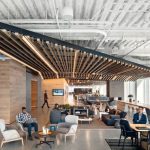
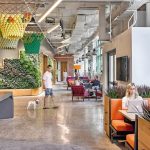
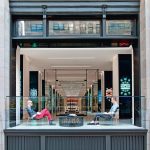


 Claudia und Philipp Herrich
Claudia und Philipp Herrich